The Frisian Model
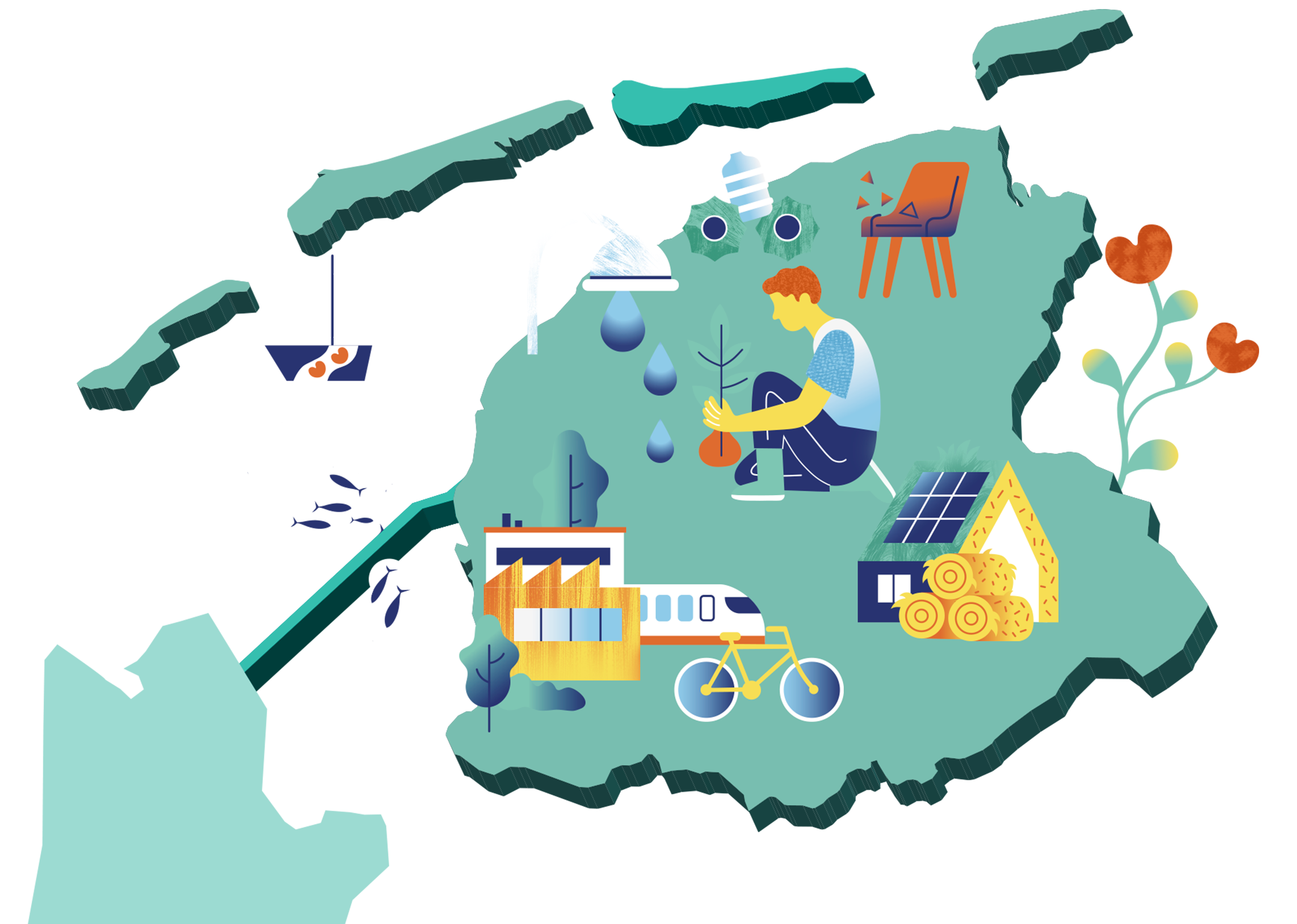
The region of Fryslân (Friesland)¶
Friesland occupies a distinct position within the Netherlands. With its own language, deep-rooted traditions, and strong sense of community, the province has a well-defined regional identity that influences both its culture (the Frisian down-to-earth DNA) and economy. Frisian is more than just a language—it reflects a mindset of resilience, self-sufficiency, and collective responsibility (‘Mienskip’). While Friesland values its heritage, it is equally committed to innovation and progress on its own terms.
Collaboration is central to Friesland’s approach to progress. The province has a strong tradition of bottom-up initiatives (supported top-down), where trust and shared responsibility create the conditions for ideas to emerge and evolve. Rather than relying on rigid structures or prolonged planning processes, Friesland fosters a pragmatic, action-oriented approach. The Frisian principle of ‘Best Genôch’ encapsulates this mindset, that makes Friesland an ideal environment for advancing circular economy solutions:
- Focus on learning by doing (good enough to get started)
- Cooperation based on trust, not on transactions
- Acting within the planetary boundaries
With its strong local networks, deep connection to land and water, and a culture of cooperation, Friesland provides fertile ground for circular principles to take hold. Here, circularity is not merely an aspiration but a transition already in motion. Receiving the title of European Capital of Culture in 2018 has strengthened this shared commitment and belief.
The Frisian economy¶
The Frisian economy is characterized by a unique blend of broad societal well-being and targeted economic strengths. The region’s approach to economic development is guided by the concept of “brede welvaart” (broad prosperity), which emphasizes not only economic growth but also a clean, healthy, and happy Friesland. This holistic perspective ensures that economic decisions contribute to well-being without passing on negative impacts to future generations or other regions.
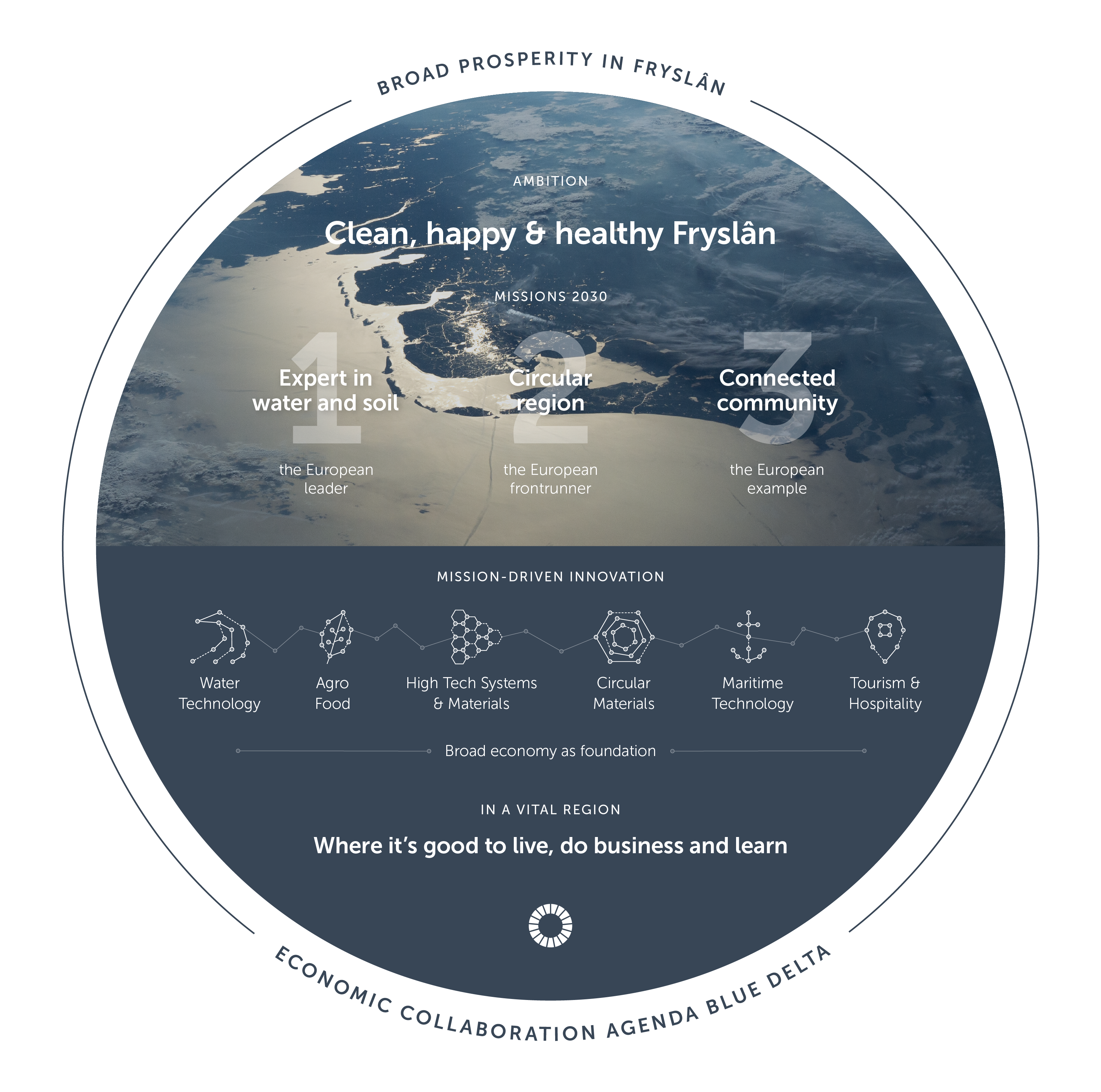
Economic performance and paradox¶
Friesland presents an intriguing paradox: while income levels and regional GDP growth are consistently lower than the national average, Frisians report higher levels of happiness and life satisfaction. Residents are more content with their environment, volunteer more frequently, and display a strong sense of community (‘Mienskip’). However, this social cohesion is not without challenges, such as demographic shifts, housing pressures, and a tightening labor market could impact the region’s resilience.
Strategic Sectors: The Six Economic Spearheads¶
The Frisian Economic Agenda (Blue Delta Approach) focuses on six key sectors. These sectors underline the region’s competitive advantages and foster innovation and investments. The companies in these sectors form regional clusters together with governments, educational institutions and finance. Moreover, these sectors are being used as regional living labs, through which the companies in these sectors make worldwide impact, such as for water (Water Technology).[1]
- Agrifood: A cornerstone of the regional economy, contributing nearly 10% to Friesland’s added value and providing significant employment opportunities. The sector focuses on dairy production, local value chains and soil expertise.
- Water Technology: A standout sector, with two-thirds of the North Netherlands’ water technology employment based in Friesland, focusing on cleaning water, retrieving nutrients and driving water-saving innovations. The sector is known for its high added value per employee and strong innovation capacity, driven by internationally renowned institutions like Wetsus.
- High Tech Systems & Materials (HTSM): A sector that not only supports other key industries but also drives innovation through digitalization and advanced technologies. In Friesland, the epicenter of the sector is in Innovation Cluster Drachten.
- Circular Materials: Representing both economic and environmental opportunities, this sector aligns well with Friesland’s circular ambitions. The ecosystem focuses on circular plastics, biobased value chains and EU frontrunner in recycling.
- Maritime Technology: Friesland is internationally known for its shipbuilding industry, specifically yachts. This sector offers high added value, a living lab for innovative products and materials and a strong patent position, contributing to the region’s distinct economic profile.
- Tourism & Hospitality: This sector plays a critical role in supporting local services and enhancing broad prosperity through tourism revenues and jobs. An excellent sector to promote the strong circular character of the region.
Economic challenges and opportunities¶
Friesland’s economy is largely driven by small and medium-sized enterprises (SMEs) and self-employed individuals, with fewer large corporations compared to the national average. While this structure fosters a close-knit business community with long-term vision and commitment, it also presents challenges in scaling innovation. Additionally, the region’s relatively low added value per job highlights the need for continued focus on high-value sectors and new business models, particularly in the context of the circular economy transition. The transition to a circular economy is recognized as a key driver of economic renewal in Friesland, with the number of circular businesses having increased by nearly 24% since 2013. The urgency to work towards a circular economy is known, but the ecosystem focuses on creating positive change and capitalizes on opportunities. Circular economy is not so much a goal as it is a means, with which the region promotes a healthy, clean and happy region.
A large share of SMEs—estimated at 60–70%—are willing to take steps toward circularity, but many face barriers such as limited knowledge and a lack of access to relevant networks. This highlights both the strong potential for circular growth and the importance of deeper collaboration and scaling within circular value chains[2].
Looking ahead¶
Friesland’s economic strategy is increasingly focused on aligning regional strengths with broader sustainability goals. The region’s ability to combine economic development with high levels of social well-being creates a strong foundation for further growth, particularly through circular economy initiatives that leverage its existing economic and social assets.
The Frisian Approach to circularity¶
An integrated Triple Helix Approach: stronger together
With 180 members from businesses, government bodies, and knowledge institutions, the Circular Friesland association plays a central role in the regional transition toward a circular economy. In 2015, seven Frisian companies laid the foundation for the circular economy in the region. In collaboration with the province of Friesland and the municipality of Leeuwarden, they commissioned a material flow analysis of Friesland. In line with the Frisian values of collaboration and shared responsibility, 25 companies formed the Circular Friesland association just a year later, with a clear ambition: by 2025, Friesland aims to be one of the circular frontrunners in Europe.
This transition has not been a top-down directive but rather an organically developed model. Circular Friesland serves as both a central connecting point and a facilitator of the circular transition. Its bottom-up structure, created by regional companies with a shared belief in the necessity of a circular transition, ensures that the association acts not on its own interests but based on the ambitions and needs of its members.
The strength of Circular Friesland lies in its representation of the so-called ‘Triple Helix,’ bringing together regional governments, businesses (mainly SMEs), and knowledge institutions to strongly cooperate as equals. This model fosters a collaborative environment where cross-sectoral initiatives can thrive, offering a solid foundation to organize regional activities effectively and maintain close connections among stakeholders. The Circulair Friesland association promotes a collective process of learning by doing and being able to effectively share these best practices and learnings.
To further illustrate the Frisian approach, the following case studies showcase how different initiatives within Friesland are putting this model into practice, demonstrating the real-world impact of the region’s circular economy efforts.
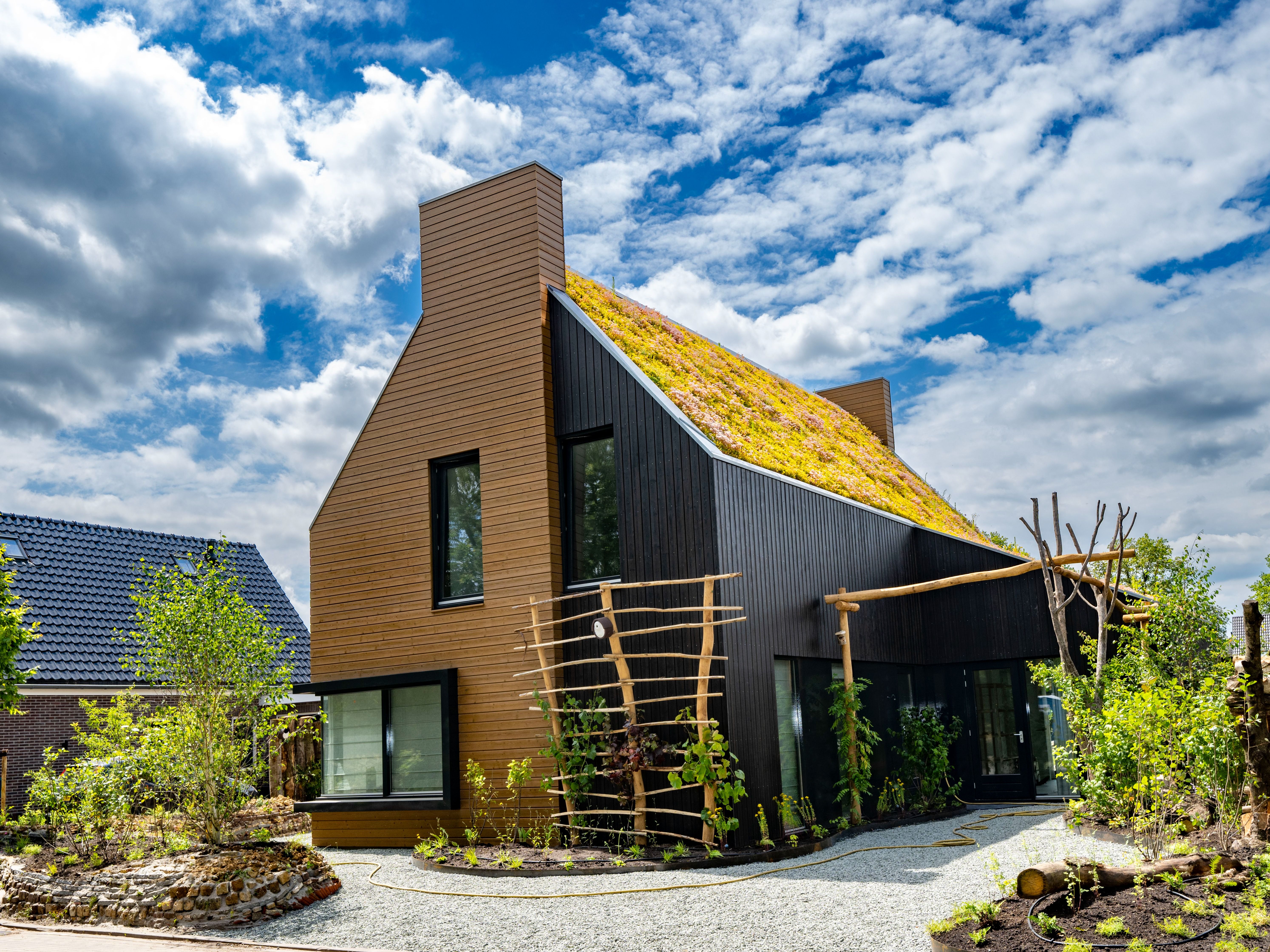

Friesland Builds Circular: Showcasing the Frisian approach to circularity
Friesland Builds Circular (FBC) drives Friesland’s circular transition through a bottom-up, trust-based approach, embodying the Frisian approach to the circular economy. By fostering collaboration across the construction sector, from architects to municipalities, FBC turns competitors into partners. Its ‘learning by doing’ model embeds circularity into real projects like the Frisian Design Approach and Sloten Betonketen, making circular construction the regional standard.
Read more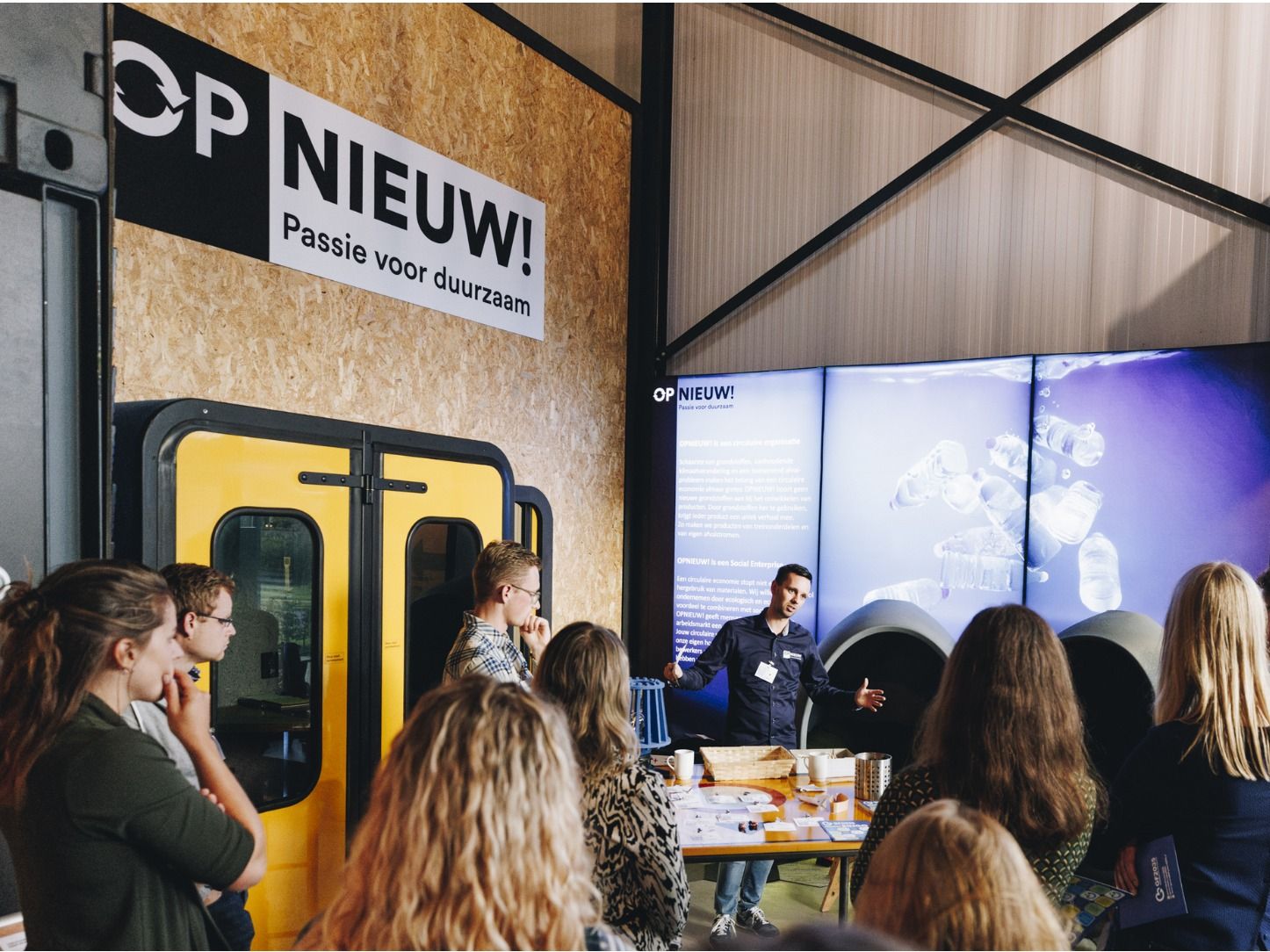

OPNIEUW!: Building a Circular Future Through People, Purpose, and Reuse
OPNIEUW! is redefining circular entrepreneurship in Friesland through hands-on collaboration and social impact. Founded on the belief that business should serve both people and the planet, it transforms discarded materials into high-quality furniture while providing meaningful work opportunities. Rooted in trust and community, OPNIEUW! has grown from a bold idea into a market leader, proving that circularity is not just about reuse—it’s about creating value through inclusion, innovation, and long-term vision.
Read more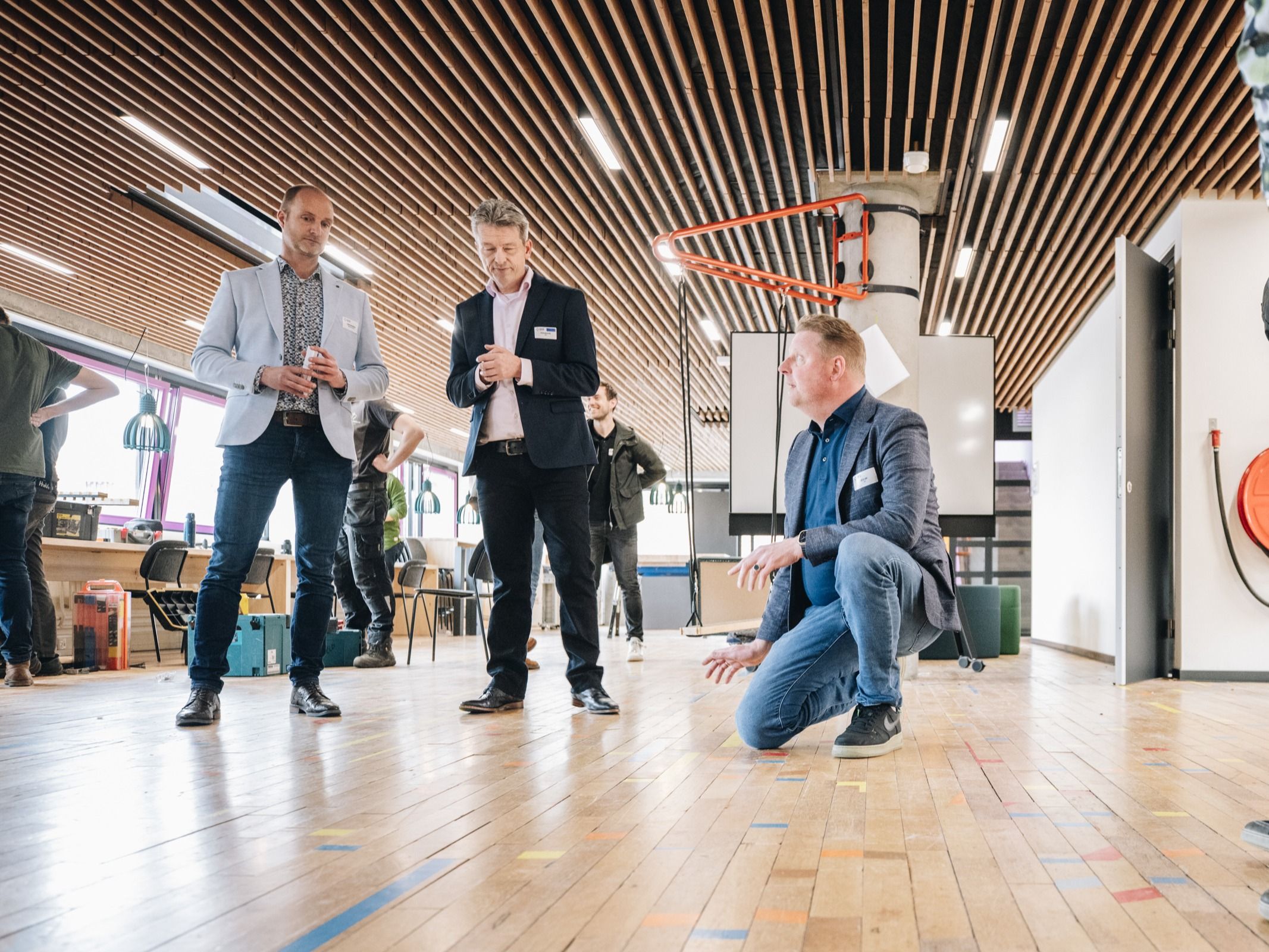

Circular Leadership in Friesland: Gemeente Leeuwarden’s Approach
Gemeente Leeuwarden is leading the way in the circular economy transition, driven by a unique bottom-up approach that brings together businesses, government, and knowledge institutions. As part of the Circular Friesland network, the municipality fosters innovation, prioritizes circular procurement, and supports regional projects that contribute to a zero-waste future. From circular construction and placemaking to waste reduction initiatives, Leeuwarden’s model demonstrates how collaboration and shared ambition can create lasting economic and environmental impact.
Read moreRegional Focus¶
Pursuing this transition at a regional scale is a deliberate choice. The regional scale is ideally suited to accelerating the circular economy— the local level is too small, and the national level is too distant. That is why over 80% of the circular transition is happening within the region. The Frisian model has been copied in the last 5 years towards other provinces in The Netherlands, such as Groningen and Drenthe in the north. The Northern regions of The Netherlands share a similar view and have the capacity to initiate and develop major international innovations and advancements, while remaining small enough for stakeholders to know one another and collaborate easily, fostering the necessary innovation. In addition to contributing to national goals from the National Program Circular Economy, such as reducing the use of raw materials by 50% by 2030, Circular Friesland and its members also focus on regional issues that are of particular importance.
While the Circulair Friesland Association has been working to promote circularity across the entire economy for over 10 years, it has deliberately focused on specific sectors with unique regional strengths, including:
- Circular Construction (Biobased, Industrial (prefab) and Water)
- Circular Materials (Plastics, Biobased and Recycling)
- Water Technology (Retrieving Nutrients from Wastewater)
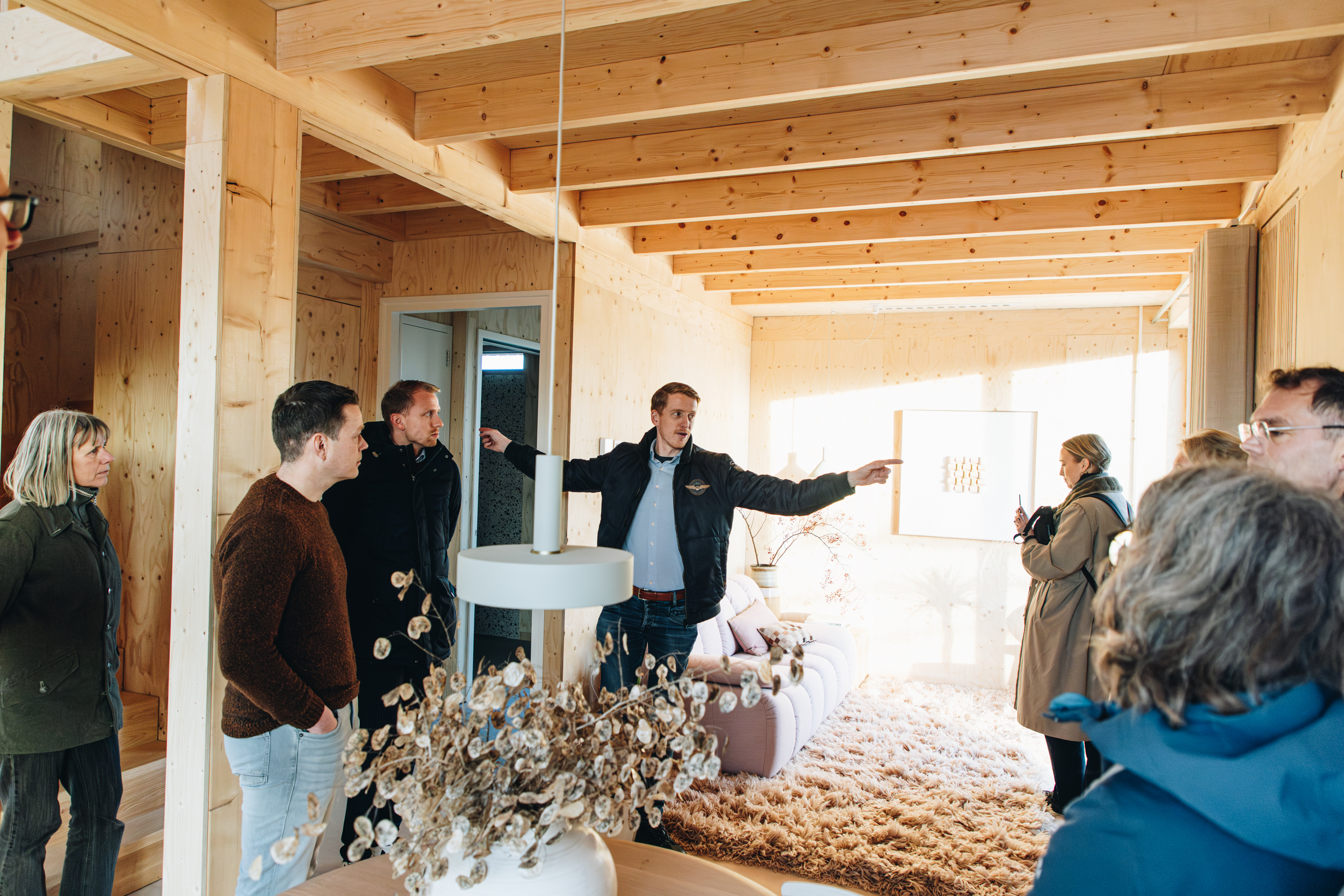
The 7 pillars¶
Many regions and organizations define the circular economy in various ways, with over 200 definitions emphasizing aspects such as closed-loop systems, renewable energy, and systems thinking. While these elements are crucial, the circular economy extends beyond just closing loops—it is fundamentally about fostering a resilient, inclusive, and livable society.
Recognizing the complexity and interconnected nature of circularity, the Circular Friesland association chose not to rely on a single, rigid definition, but instead built its foundation on adaptable design principles. Together with its strategic partner Metabolic, it developed the Seven Pillars of the Circular Economy[3]—not as a fixed framework, but as dynamic and flexible guiding principles. This broad and integrated perspective on circular economy design provides both structure and adaptability, offering a practical way to guide decision-making, inspire action, and measure progress.
The strength of this model lies in its flexibility. It allows for consideration of regional characteristics while maintaining alignment with broader circular economy goals. The Seven Pillars serve as both a guiding compass and a practical tool for businesses, policymakers, and communities. They help translate the often abstract concept of circularity into concrete actions that can be applied across different sectors and regional contexts.
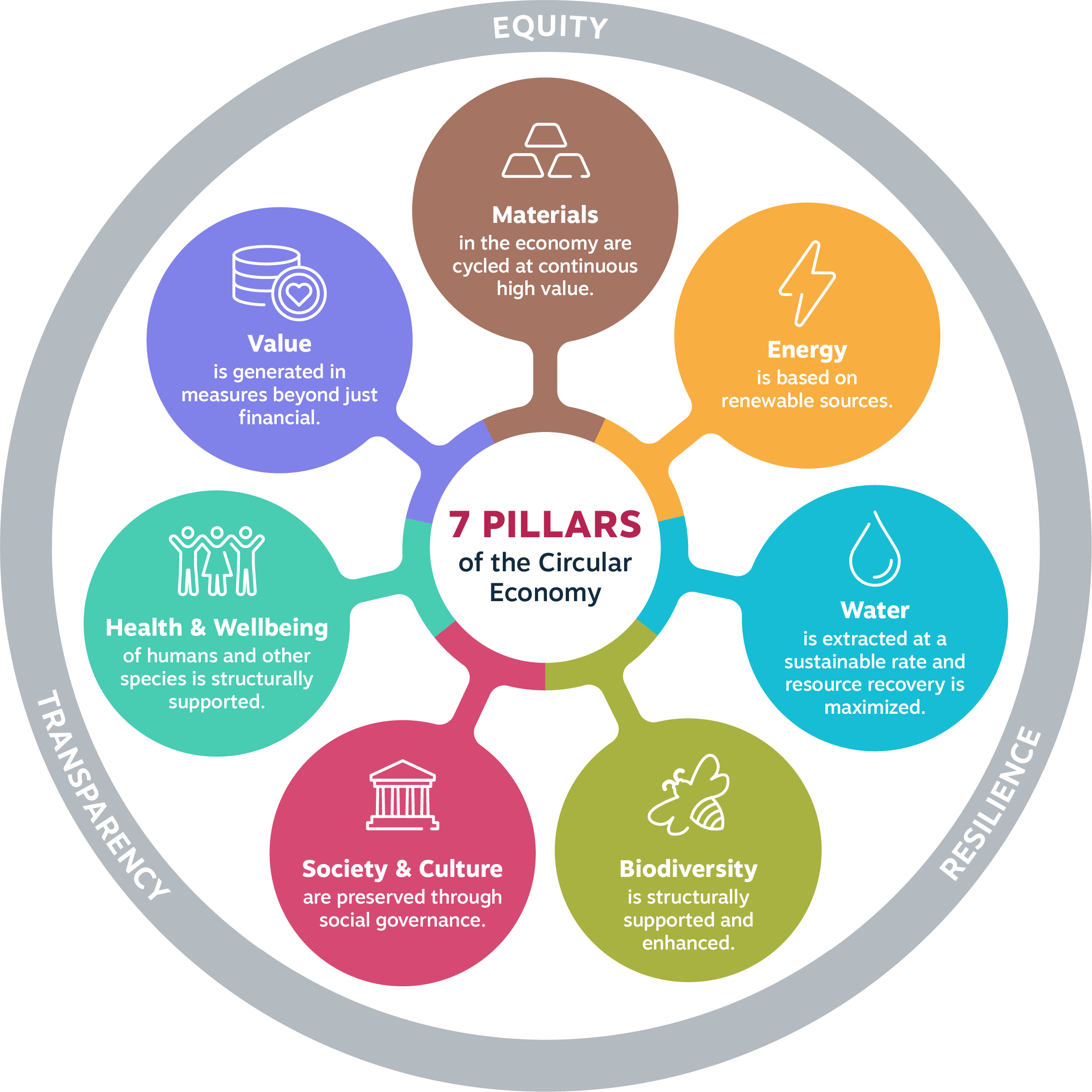
7 pillars of the circular economy, Metabolic[3]
Strategy¶
Circular Friesland operates through five common grounds for its members: Association Program, Tipping Points, Circular Learning, Projects, and Campaigning & Lobbying. These elements collectively support the organization’s mission to drive the circular transition in Friesland. A more elaborate explanation of the regional transition program can be found in Friesland in Action.
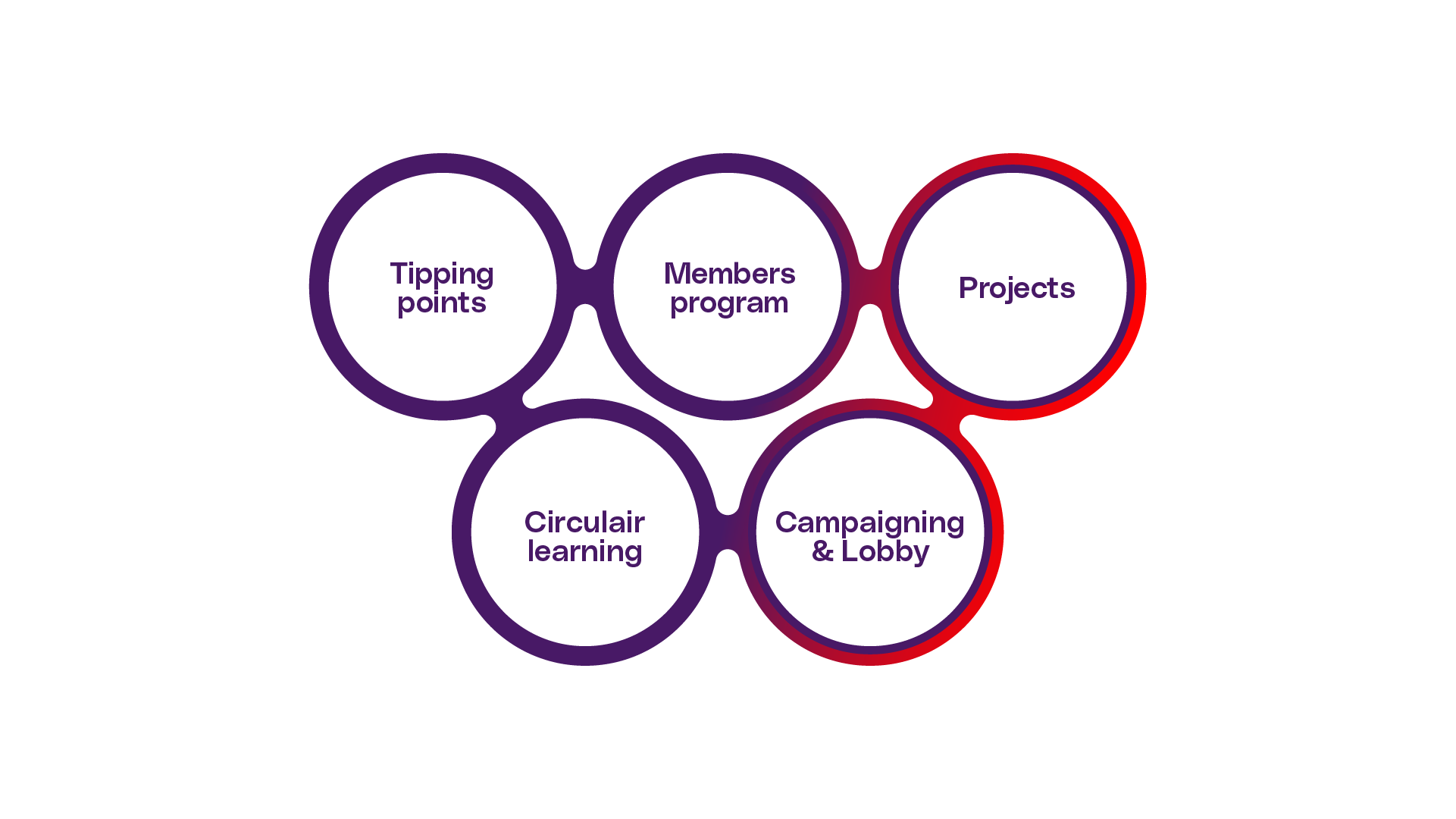
- Association program
The members of Circular Friesland form the beating heart of the association. A core principle among members is: “When members get to know each other, they begin to trust each other, and when that happens, collaboration follows naturally.” An important guiding principle is active participation, where members are encouraged to both contribute and benefit. This dynamic fosters a sense of ownership and energy within the association.
- Tipping points
Circular Friesland focuses on key tipping points that can accelerate the circular transition. These include promoting circular procurement by Frisian governmental bodies, adapting circular principles in education and advocating for legislative changes that facilitate a circular economy at regional, national, and European levels. These actions aim to make businesses flourish, innovate and invest and by doing that, drive the circular economy within the right preconditions. The goal for Circulair Friesland is that within the triple helix, every ‘group’ can play its part in the best way possible. Through the CGR, the region wants to understand and follow these tipping points even better.
- Projects
The organization is deeply committed to implementing the circular transition through value chain projects. Members are encouraged to test new circular solutions in practice and then scale them up to achieve tangible impact. Additionally, Circular Friesland supports its members in adapting to evolving market conditions. More and more clients incorporate circular requirements into their tenders, and Circular Friesland ensures its members are well-prepared to meet these demands. Because Circulair Friesland works in the center of the regional ecosystem, the association knows on which topics to focus, where the ambitions of its members and how to scale initiatives from ideas to new standards.
- Circular learning
Circular Friesland believes that the regional circular transition can only succeed if the region keeps continuously learning. The educational sector is essential for this. The knowledge institutions are responsible for educating students as future key players in the circular economy, training the current labor force based on circular innovations, as well as co-create those innovations with partners from the field. Circular Friesland empowers students and professionals to generate new insights and energy during their studies, amplifying the impact of their education to meet the needs of the association’s members.
- Campaigning & lobbying
While promoting Friesland as a circular frontrunner, Circular Friesland adheres to the principle of “be good and tell it.” The association works with enthusiasm to showcase the circular achievements of its members and programs to other regions in the Netherlands, the EU and globally. By sharing concrete examples of the circular economy from companies, governments and educational institutions, Circular Friesland aims to connect to other regions and contribute to building a sustainable and resilient circular economy outside of its own region. Moreover, the Frisian ‘Ambition Table on Laws and Regulations’ uses best practices and perceived thresholds to change policies nationally and European.
Integrated regional programs: sectors, value chains and tipping points¶
The Friesland region has learned that a circular economy can only be achieved by:
- Making (regional) SMEs and other companies take the initiative
- Setting a certain sector or societal challenge central
- Connect the societal challenges with positive change
- Focus on creating new value chains (circular and biobased)
- Promoting and connecting Supply and Demand simultaneously
- Creating ownership at the relevant stakeholders
- Building the right capacity at and/or for the relevant stakeholders
- Changing the framework, by setting new preconditions (crucial for upscaling and creating the essential Level Playing Field)
- Connecting the region with national and international (EU) policies and funds
This is why the region works with integrated regional programs, that combine all these success factors. These regional programs form essential ‘umbrellas’ for all kinds of regional initiatives, that can be connected, supported and scaled up. Examples of these programs are:
- SPARK the Movement (regional educational institutions)
- Closing the Nutrient Cycle (SNuK)
- Circulair Commissioning and Procurement (regional governments)
- Circular Industrial Parks
- Wad Gaat Om (Wadden-region is Turning, hospitality/tourism)
- Friesland Builds Circular

SPARK the Movement: Educating for a Circular Friesland
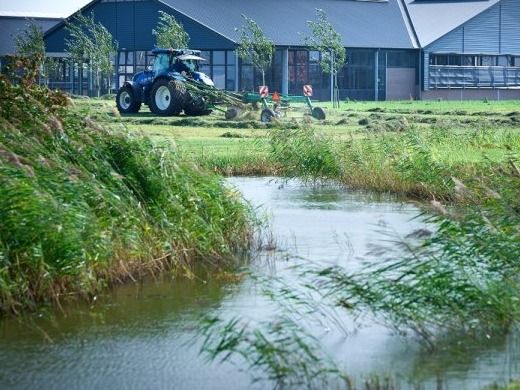
SNUK: Closing Nutrient Loops in Friesland
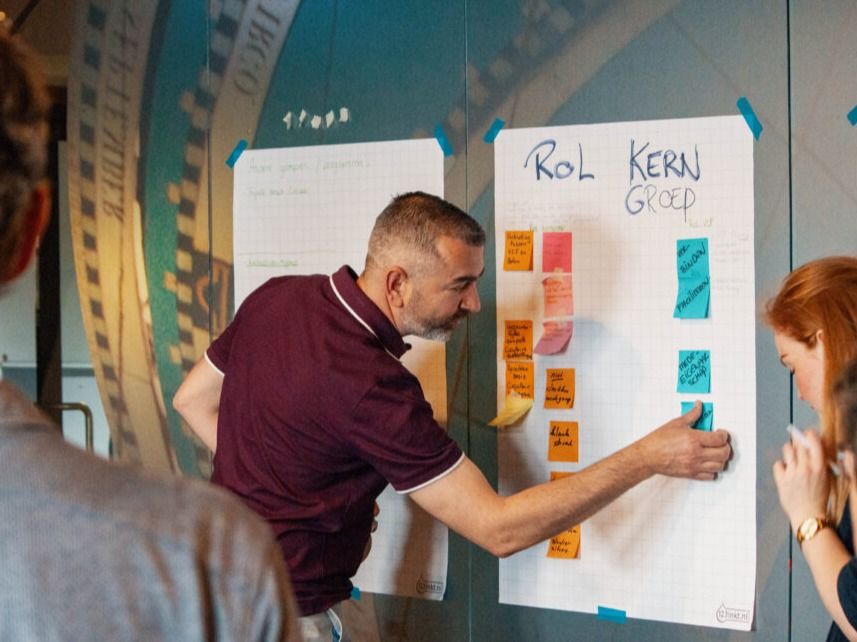
Circular Procurement program for all Frisian governments
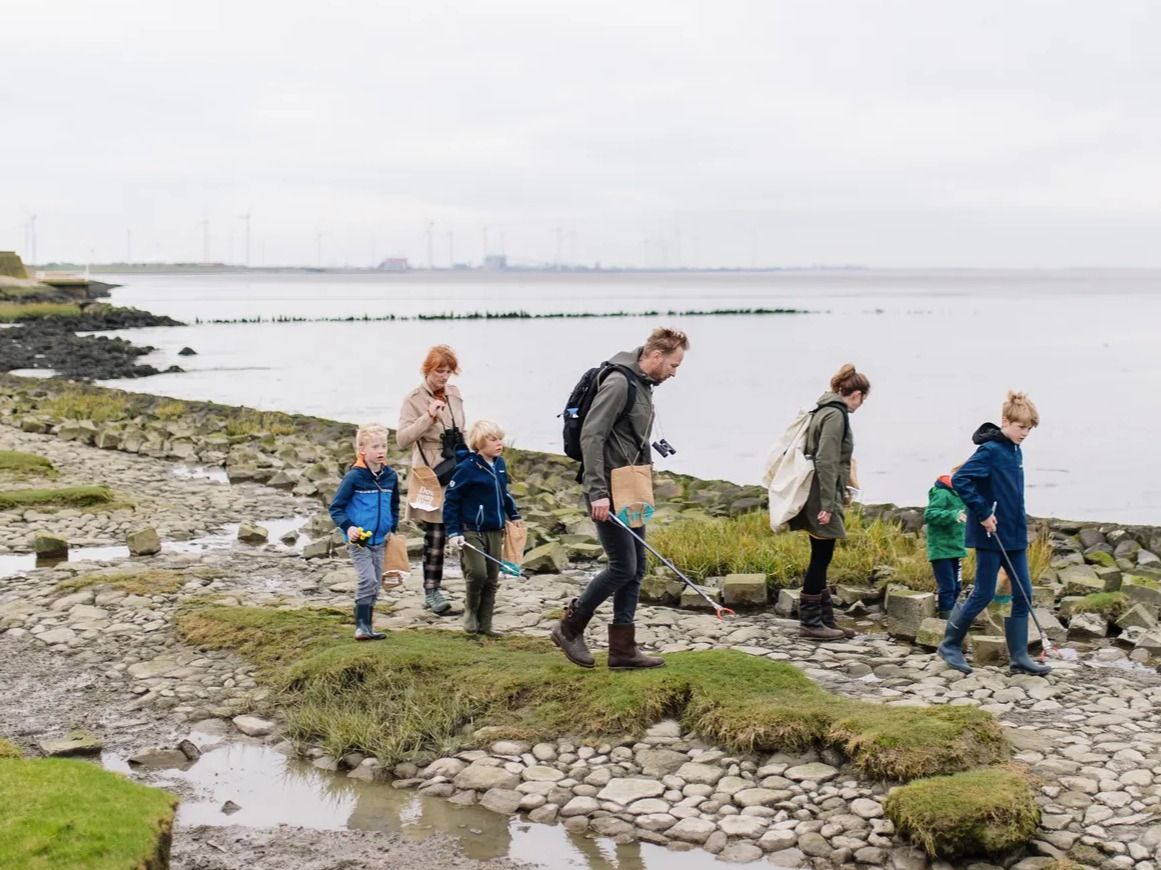
Systemic change for a plastic-free Wadden area
The outline of these programs can be found in the Case Study overview of Friesland. One of the largest and most developed of these programs is Friesland Builds Circular. The program focuses on making circular and biobased construction the new normal in the Frisian region. Therefore, it focuses on different pillars: Demand (Client Support Approach), Supply (Value Chains & Innovation), The New Normal (Circular Criteria), Building the Future (Education) and Laws and Regulation (Policy Influencing). Friesland Builds Circular connects the societal challenge of the housing crisis with creating positive change: new innovations (watertech, biobased and prefab), new business models for farmers (biobased crops), cheaper and faster housing (prefab and biobased) and a healthier and more biodiverse living environment. All relevant stakeholders take part in this program, across the whole value chain. The program is closely linked to European and Dutch policy stakeholders, through which we can influence policies and align the necessary funds towards promoting positive, circular impact.
Connection to National and EU Policies and collaboration with European regions¶
Friesland embraces the vision of the region as a key player in the circular transition: in Europe over 80% of the transition takes place in a region. For this important reason, Friesland aims as a frontrunner to connect regions across The Netherlands, Europe and globally to exchange learnings and best practices, connect companies, change laws and regulations for the better and organize and streamline the required funding for the transition in regions and foster innovation at companies.
Already, Friesland is cooperating with other European regions in EU innovation programs (e.g. HORIZON, Interreg) and through the ACR+ network with other similar regional public-private partnerships in Europe, such as Vlaanderen Circulair (Belgium), Kirkular Pirkanmaa (Finland) and Zero Waste Scotland (UK). Together with these regions, Friesland aims to expand this network towards other frontrunners in Europe and beyond. The focus is on developing further the different circular regional approaches and monitoring the transition and movement. The cooperation in and between regions in the circular transition is a hopeful movement in the face of global turbulence. It is where the circular economy becomes tangible, inspiring and ready for scaling up.
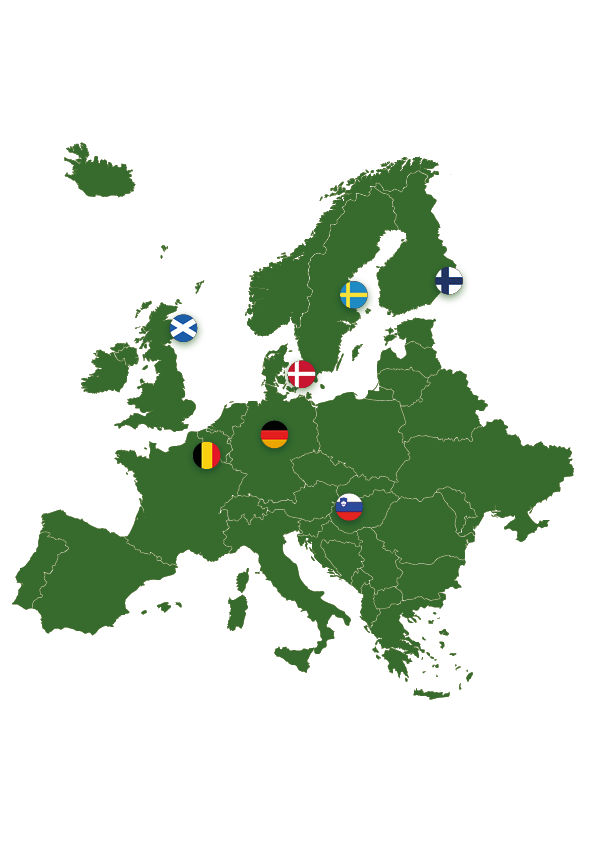
Provincie Fryslân, Innovatiepact Fryslân & Planbureau Fryslân. (n.d.). Blue Delta Monitor. Retrieved from: Blue Delta Monitor website
Sijtsma, F., Kamminga, O., Langley, D., Broekhuizen, T., Faber, N., Nonhebel, S., Koch, J., van Klinken, R., & van der Werff, E. (2023). Sneller circulair: Luisteren naar ervaringen van bedrijven om barrières te verminderen. Rijksuniversiteit Groningen.
Metabolic. (2019). The Seven Pillars of the Circular Economy. Retrieved from: Metabolic website